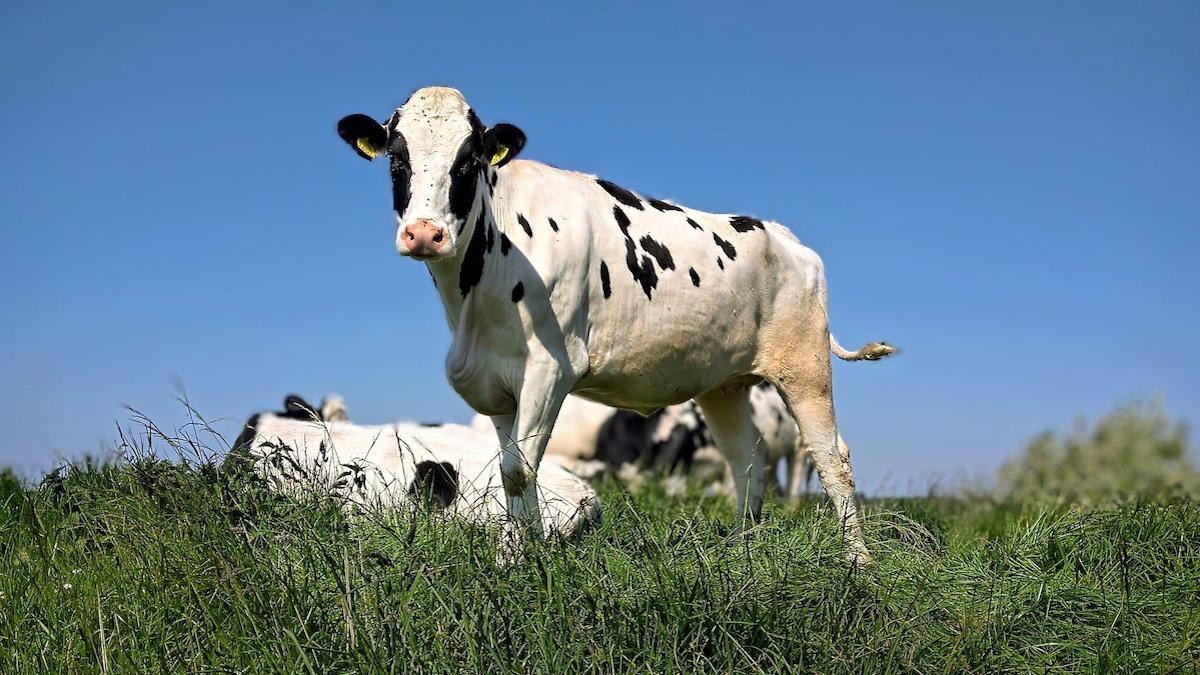

Training cows to urinate in one location could lower nitrous oxide emissions, researchers say. Rikkie Neutelings
It’s no secret that cows emit a lot of greenhouse gases. Aside from methane, their urine also emits nitrous oxide. In order to minimize these emissions, researchers are testing if potty-trained cows with control over their urinary reflexes can lead to lower nitrous oxide in the atmosphere.
In a new study in Current Biology, researchers shared how they trained 16 calves to use a specially designed toilet, called the MooLoo. On this small scale, the team noted that with 80% of urine capture in the defined location, they were able to reduce ammonia emissions by 56%.
This is important, because the nitrous oxide emissions occur when ammonia from cow urine interacts with microbes in soil. By lowering ammonia emissions and keeping ammonia from touching the soil, the nitrous oxide emissions also remain minimal.
To potty-train the cows, researchers used food, such as barley or molasses, as a reward for calves that urinated in the MooLoo. Ten of the calves took quickly to the exercise, and the study authors noted that training cows to pee in designated areas was easier than potty-training most young children.
The cows were given a diuretic to spur urination first, then they were given 45-minute periods in the MooLoo to do their business. Cows that got the job done received their reward. If cows ventured off to pee elsewhere, the authors used a small, three-second squirt of water from a lawn sprinkler to discourage the behavior.
“Our findings are original and reveal a hitherto unrealized opportunity to harness the cognitive capacities of animals to help resolve pressing environmental issues without compromising animal welfare,” the study notes. “We have shown that a majority of cattle can be trained to deposit most of their urine in a defined location, enabling the development of more effective methods to collect, treat and dispose of pure urine than is currently possible with technical solutions alone.”
Globally, livestock are responsible for 14.5% of anthropogenic emissions, according to the Food and Agriculture Organization of the United Nations. Cattle are the No. 1 emitter of greenhouse gases compared to other livestock. While most livestock emissions are methane, 29% of all livestock emissions are nitrous oxide.
The UN notes that improving herd efficiency, relying on natural resources, improving animal breeding and health interventions, and boosting land management can all help reduce livestock-related emissions. Now, incorporating training for the animals could also come into play.
The authors state that more research is required on a bigger scale, which will also require some automation to work for a larger group of cattle. Their hope is that training these animals to use the bathroom in one location could lower emissions while also improving the cleanliness of their living conditions.
- Top 5 Meat and Dairy Companies Match Exxon in Greenhouse Gas ...
- Animal Agriculture Responsible for 57% of Greenhouse Gas ...
- New Study Finds Methane Emissions From Cows 11% Higher ...
- Lab-Grown Meat Debate Overlooks Cows' Range of Use Worldwide ...

 233k
233k  41k
41k  Subscribe
Subscribe 